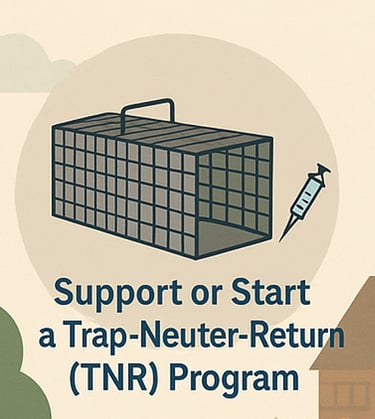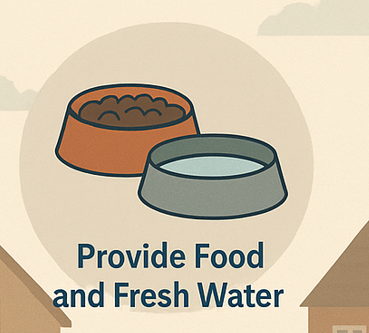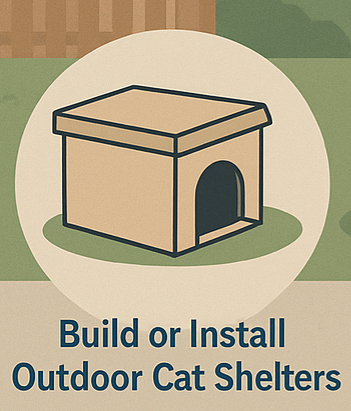How You Can Help Community Cats in Your Neighborhood
Community cats, also known as feral or stray cats, are a common sight in neighborhoods across the United States. While some are friendly strays abandoned by previous owners, others have never been socialized to humans. These cats often live in colonies near food sources, such as dumpsters, backyards, and alleys. As their numbers grow, so does the need for compassionate community involvement. Fortunately, there are many ways you can help community cats in your neighborhood—right now.
What Are Community Cats?
Community cats are unowned, free-roaming cats who live outdoors. They may have been born in the wild or abandoned and left to fend for themselves. Unlike house cats, community cats are often wary of people and cannot be adopted into homes without a lengthy socialization process—if at all. However, that doesn’t mean they don’t need help.
Helping community cats is a shared responsibility. By understanding their needs and offering appropriate support, individuals and communities can reduce overpopulation, improve public health, and create a more humane environment for everyone—cats and humans alike.
Why It’s Important to Help
A single pair of unspayed and unneutered cats can produce thousands of offspring over a few years. Without intervention, this can quickly lead to uncontrolled cat populations, causing:
Public health concerns due to the spread of disease
Conflicts with residents over noise, property damage, or aggressive behavior
Shorter, more difficult lives for the cats themselves due to starvation, illness, or injury
Helping community cats isn't just an act of kindness—it’s a practical step toward healthier, safer, and more balanced neighborhoods.
1. Support or Start a Trap-Neuter-Return (TNR) Program
The most effective and humane way to manage feral cat populations is through Trap-Neuter-Return (TNR). This process involves:
Trapping the cats using safe, humane traps
Spaying or neutering them at a veterinary clinic
Vaccinating for rabies and other diseases
Returning them to their original territory
Once altered, these cats are unable to reproduce and tend to roam less, fight less, and cause fewer disruptions. Over time, TNR stabilizes and reduces the cat population.
To get started:
Partner with a local animal rescue or shelter
Purchase or borrow humane traps
Spread awareness among neighbors to gain community support
SEO Tip: If you're in New York, consider adding local keywords like “TNR programs in Cattaraugus County” to help residents find regional services.


2. Provide Food and Fresh Water
Consistent access to food and clean water can significantly improve the health of outdoor cats. While some people fear that feeding cats encourages more to come, when paired with TNR efforts, feeding stations can stabilize and support the colony.
Best practices:
Feed once or twice daily at a consistent time
Avoid leaving food out overnight to deter pests
Keep feeding areas clean and discreet
Providing food helps reduce malnutrition, illness, and aggressive behavior among colony members.


3. Build or Install Outdoor Cat Shelters
Community cats need shelter, especially in cold or wet weather. Building or buying insulated outdoor shelters gives them a safe place to sleep, stay warm, and avoid predators.
You can create shelters using:
Rubber totes lined with straw
Wooden boxes with slanted roofs
Pre-made cat igloos or feral cat shelters
Place shelters in quiet, shaded, and hidden spots to protect cats from human and animal threats.


4. Educate Your Neighbors
Many community cat problems arise due to misinformation. Some people may see feral cats as pests or health risks. By educating your neighbors, you can foster understanding and cooperation.
How to raise awareness:
Share flyers or brochures about TNR
Host community meetings or online discussions
Invite a local vet or shelter representative to speak
The more informed your neighborhood is, the more successful your efforts will be.


5. Volunteer With or Donate to Local Animal Organizations
If you don’t have the time or resources to help directly, you can still make a difference. Most animal rescues rely on donations and volunteers to carry out their missions.
Ways to help:
Volunteer for trapping, transport, or feeding
Donate money, food, litter, or equipment
Foster friendly kittens who can be socialized and adopted
Every contribution counts—and helps save lives.
6. Report Abandonment or Animal Cruelty
It’s illegal in many areas to abandon pets or harm animals. If you witness animal abandonment, neglect, or cruelty, report it to your local animal control or law enforcement.
Keeping records such as photos, dates, and locations can help authorities take action. Protecting animals from harm is a community responsibility.
7. Adopt or Foster Socialized Cats and Kittens
While most feral adult cats prefer outdoor life, many kittens and abandoned house cats are suitable for adoption. Fostering or adopting socialized cats reduces the burden on outdoor colonies and local shelters.
Visit your local animal rescue to:
Adopt a cat or kitten in need
Foster temporarily until permanent homes are found
Encourage friends and family to adopt, not shop
Giving just one cat a home can make room for more in need.
8. Advocate for Local TNR Policies and Funding
Support long-term change by advocating for community-wide TNR programs. Many cities have implemented TNR ordinances with great success, leading to lower shelter euthanasia rates and improved cat welfare.
You can help by:
Attending city council meetings
Signing petitions
Working with nonprofits to promote legislation
When local governments support TNR, everyone benefits—cats, communities, and taxpayers.
Final Thoughts
Helping community cats in your neighborhood doesn’t require professional training—just compassion, awareness, and a willingness to act. Whether you assist with a TNR effort, provide food and shelter, or simply spread the word, your actions matter.
By working together, communities can reduce suffering, stabilize cat populations, and create a better future for both people and animals. Every small effort makes a big impact.
